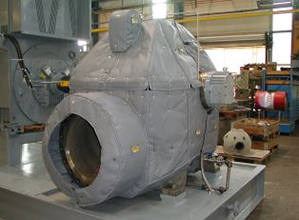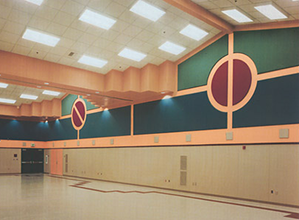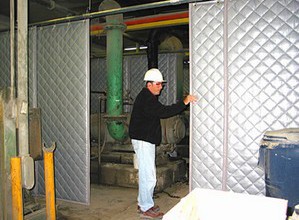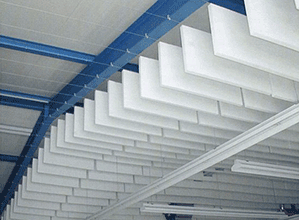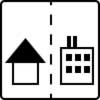Your Guide to Buying the Best Outdoor Sound Blankets
Outdoor sound blankets are a great cost-efficient and highly effective way of reducing loud noises. These flexible quilted panels are extremely versatile, which is why they are so popular among construction companies.
If you are in the market for some outdoor sound-proofing these are a great option. However, outdoor sound blankets are not a one size fits all solution. There are a few different types of sound absorbing and blocking blankets; some will render better results than others. To help you out, we have put together a summary of what exactly outdoor sound blankets are, what features you should look for and where to buy them.
What are Outdoor Sound Blankets?
Outdoor sound blankets are large weather-resistant vinyl encapsulated panels that are engineered to absorb and block noise. These exterior sound panels are typically used to deafen the sound of large equipment, HVAC systems and construction projects. They are also great to help comply with local noise ordinances.
Outdoor sound blankets are popular because they are extremely durable, highly effective and cost-efficient. These panels can withstand intense wind, freezing temperatures, high heat and prolonged UV exposure. Additionally, the unique design of these flexible panels allows installation on nearly any support structure, such as fences or frames. Outdoor sound blankets are a permanent or temporary solution.
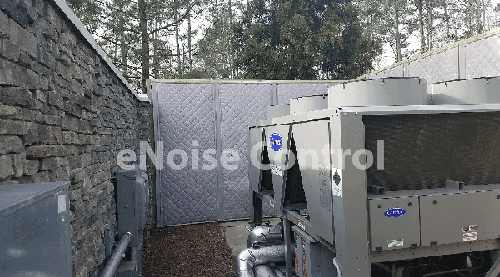
Outdoor Sound Blanket
What to Look For
There are a few aspects of outdoor sound blankets to evaluate while deciding what type of barrier will be best for you. These include the NRC rating (Noise Reduction Coefficient), the STC rating (Sound Transmission Class) and the temperature range/weather resistance.
1. Noise Reduction Coefficient
There is a bit of science involved when shopping for sound blankets. The first term we will cover is the NRC. This rating measures the absorption of sound; the higher the rating, the better the product is at absorbing sound. The thickness and density are the two determining factors in calculating the NRC rating.
The NRC rating ranges from 0.0-1.0. For example, if an outdoor sound blanket has an NRC rating of .65 this means 65% of the sound in the space absorbed and the other 35% reflected back into space. While reviewing sound blankets, keep in mind the higher the NRC rating and the thicker the product the better.
2. Sound Transmission Class
In addition to reviewing the NRC of outdoor sound blankets, you should pay attention to the STC (Sound Transmission Class) rating. The STC rating also measures how much the product is able to reduce noise; but instead of measuring the amount of absorption, it measures the transmission loss (or how much sound will still come through the barrier).
STC ratings are found based on sound frequency measurements in Hertz (or Hz). To give a frame of reference, most humans are born with the ability to hear frequencies as low as 20 Hz and as high as 20,000 Hz. However, for standard sound testing purposes, the soundproofing industry measures barrier performance based on a range of 125 Hz to 4,000 Hz.
Generally speaking, the higher the STC rating the better. However, it is important to not solely rely on the STC rating as it can be misleading in certain soundproofing scenarios. For example, if you are wanting to deafen the sound of construction noise or heavy bass music, you should rely more heavily on the NRC rating. This is because noise sources such as traffic noise, heavy equipment, and bass drums are all below 125 Hz and will not be applicable to the STC rating since the scale starts at 125 Hz. For higher pitched frequencies, STC ratings are extremely reliable.
3. Temperature and Weather Resistance
The final most important aspect of an outdoor sound blanket you should take into consideration while purchasing is the weather durability. Considering these barriers will brace the natural elements at any given time of year, you will want to ensure they are capable of withstanding high heat in the summer, freezing temperatures in the winter and everything in between.
Keep in mind these blankets are extremely cost-effective because of their reusability. If you have to keep replacing them due to their lack of weather resistance, you lose the cost-benefit; so, invest in a higher quality blanket upfront.
How to Install Outdoor Sound Blankets
The installation of outdoor sound blankets isn’t as difficult as it may seem. The most difficult aspect of installation is setting up or preparing the structure the outdoor sound blankets attach to.
If a fence is not conveniently located around the space you wish to soundproof, consider building a temporary structure that can hold the blankets. Building temporary fencing framework is a great option that will allow you to strategically place the barriers to get the maximum amount of soundproofing, as opposed to haphazardly securing them to closest stable structures.
Once you have identified or built the structure that the outdoor sound blankets attach to, securing the barriers themselves is as simple as zip-tying the grommets or installing hooks to hang them.
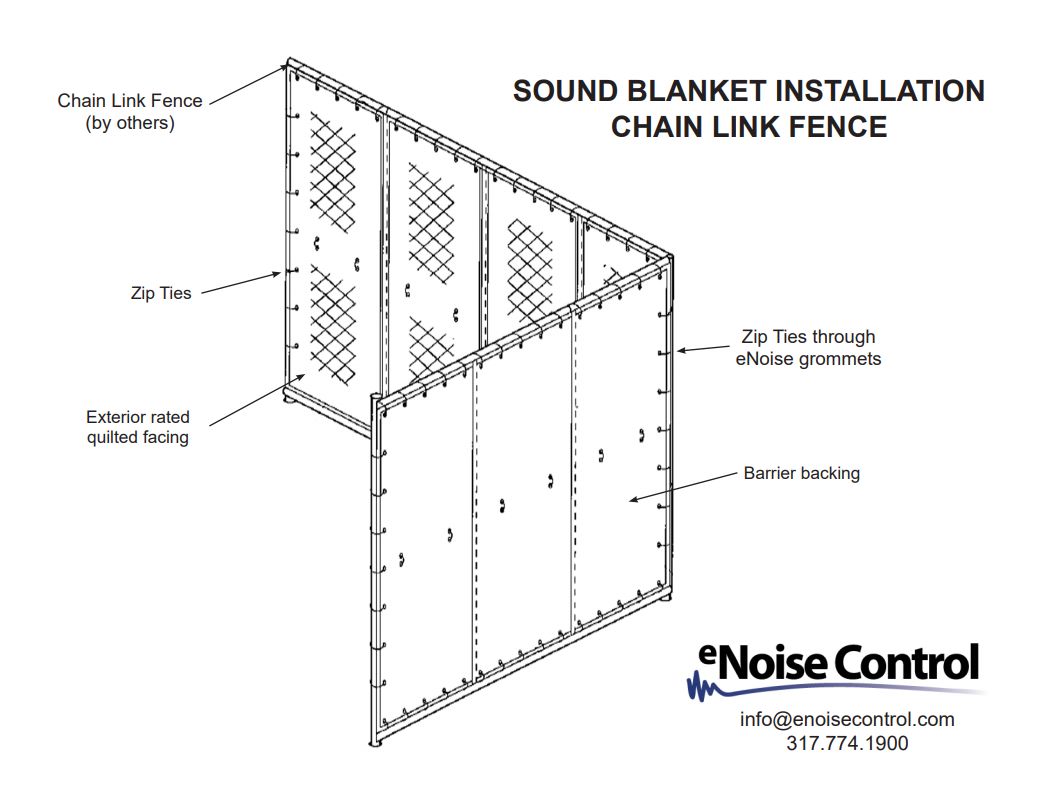
Where to Buy Outdoor Sound Blankets
Here at eNoise Control, we provide a wide selection of high-quality outdoor sound blankets to suit a variety of soundproofing needs. eNoise Control’s removable velcro-sealed sound blankets help address sound directly at the source. Our reusable, high temperature, sound control blankets are an ideal fit for compressor noise and fan housing noise applications.
If you are looking for more information or are ready to purchase the best outdoor sound blankets, give us a call at 888.213.4711 or send us an email to info@enoisecontrol.com.
